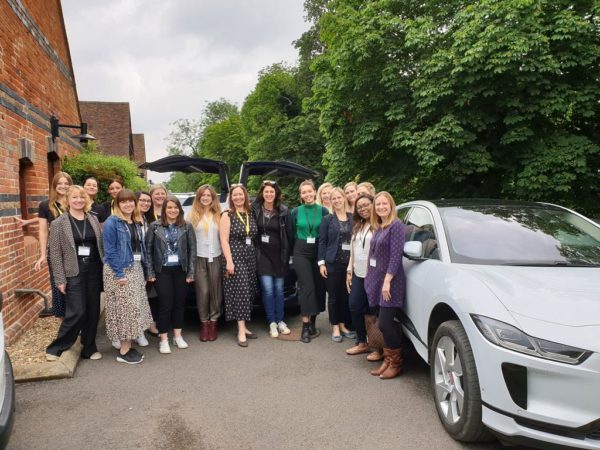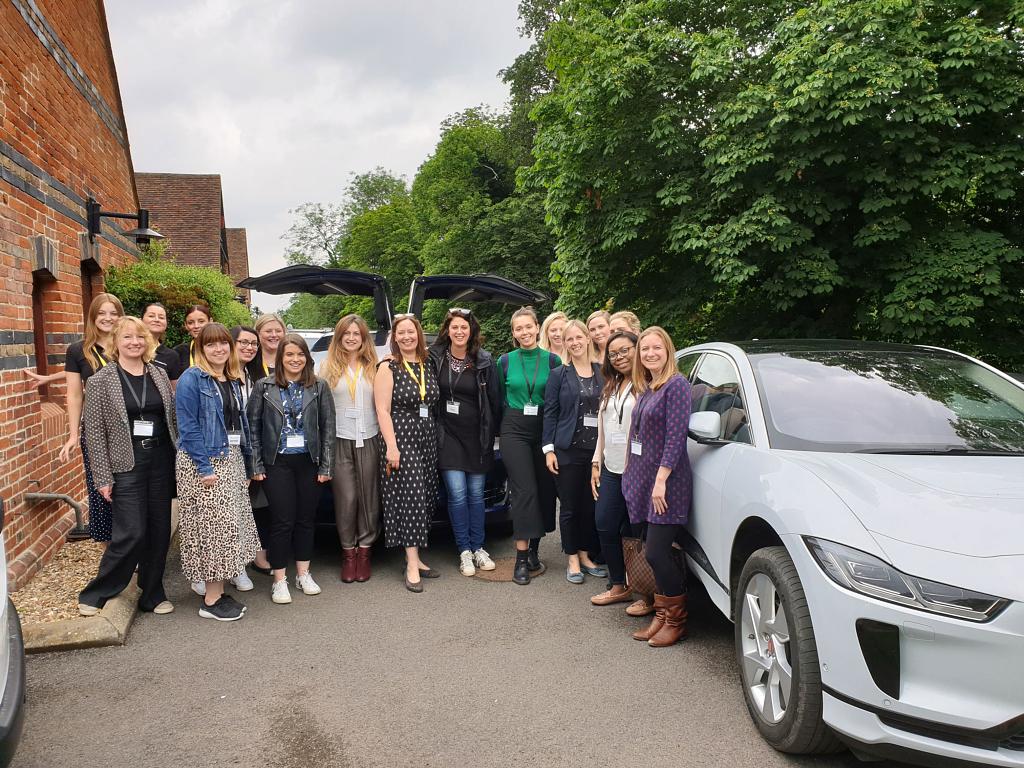
Events manager, Hannah Stanley, gives a run down some of the latest EV’s on the market

Events manager, Hannah Stanley, gives a run down some of the latest EV’s on the market

The transition to a net-zero carbon transport future is vital to help eliminate emissions from the sector and unlock new opportunities. In July, as part of our ReWiRE initiative, we took a group of women who are passionate about helping accelerate this transition on an EV driving day kindly hosted by DriveElectric.
The transport sector currently accounts for 23% of global energy-related CO2 emissions and is the fastest-growing contributor to climate change, according to the IEA. The health impacts of Internal Combustion Engine (ICE) vehicles are widespread – according to data from the World Health Organisation, nine out of 10 people across the world breathe air containing high levels of pollutants, including that from transport. These are some of the main drivers for the women in EVs group choosing to work in the sector, and why they are keen to see an increased uptake of electric vehicles (EVs).
On our driving day we tested some of the vehicles currently leading the way towards a zero-carbon transport future. No EV driving day would be complete without the Tesla – the world’s biggest electric car company by number of units sold and the most popular, but maybe not the most affordable! Tesla calculates that the 550,000 Tesla vehicles that have been sold have driven over 10 billion miles to date. This resulted in a combined savings of over 4 million metric tons of CO2 through fuel savings, equivalent to cutting the emissions of over 500,000 ICE vehicles with a fuel economy of 22 miles per gallon (MPG).
We had the pleasure of driving the Tesla Model X, Jaguar I-Pace, Hyundai Kona, VW E-Golf, BMW i3, Kia Soul and Nissan Leaf and have reviewed and rated them below.

Tesla Model X
Jaguar I-Pace
Hyundai Kona
VW E-Golf
Kia Soul
BMW i3
Nissan Leaf
Of the cars we test drove, the ones that seemed to shine were the Jaguar iPace and Kia Soul, both of which were tranquil and joyful to drive. They change the way you think about driving and provide a calmer more peaceful environment to travel. Who know driving could be such a serene experience?
As well as experiencing the cars, the day also offered the chance to discuss the key considerations when purchasing your next car; charging infrastructure at home, at work and on the move; the size of electric vehicle you need, based on your daily mileage; the charging cost per mileage and the suppliers that are offering innovative EV tariffs. The table below outlines the estimated costs:
| High | Medium | Low | |
| Annual miles | 20,000 | 10,000 | 6,000 |
| Weekly miles | 384 | 192 | 115 |
| Average charge time (hrs/week) | 15 | 8 | 5 |
| Energy used (kWh) | 105 | 56 | 35 |
| Weekly running cost 14p kWh | £14.70 | £7.84 | £4.90 |
| Weekly Smart charging tariff (***) | £5.25 | £2.80 | £1.75 |
Reference DriveElectric
ReWiRE hosts regular meetups for women in the electric and autonomous vehicle sector to openly share their experience and expertise, work together to increase diversity across the sector and give each other a leg up when the opportunity arises. We all have the hope that the EV sector is more representative of the people it is selling to, to differentiate it from the traditional ICE market.
Regen regularly runs the EV and electricity system forum to bring together organisations engaged in the EV revolution with those involved in the electricity system, to discuss the challenges and opportunities from the growth of the electric vehicle market. During a recent forum, we asked the audience what they believed was the biggest barrier to electrification. Over 40% answered ‘the supply and choice of electric vehicles’. With 2020 seeing the introduction of 30+ new models for recognised OEMs, it is clear that some of the more substantial barriers to electric vehicle adoption are being resolved swiftly.
Our next ReWiRE EV get together will be followed by our EV and electricity system forum and will be held on 25 September. we welcome those of you who are interested to get involved.
* Basic model price with Plug-in Car Grant subsidy deducted
**Range in miles with basic battery based on figures from DriveElectric (www.drive-electric.co.uk/vehicle/)
*** Octopus Go tariff – 5p kWh (between 00:30 – 04:00)